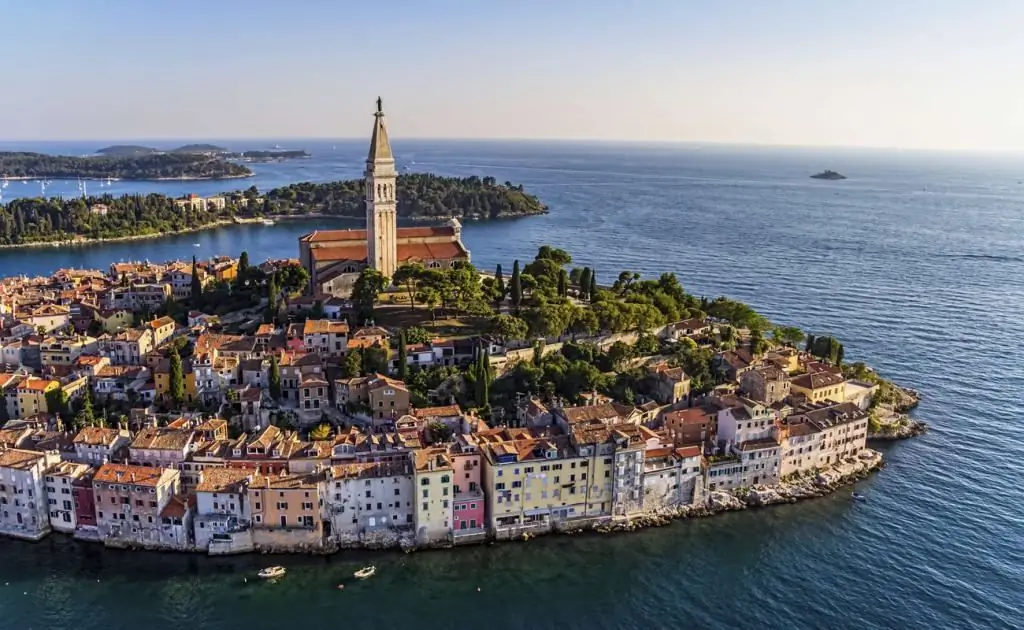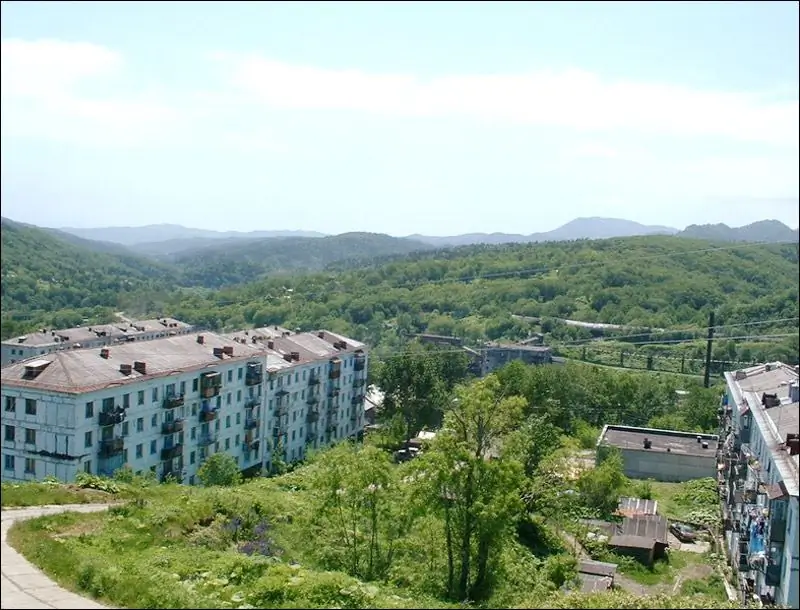- Author Harold Hamphrey [email protected].
- Public 2023-12-17 10:06.
- Last modified 2025-01-24 11:10.
What do we know about Manila? Any student will say that this is the capital of the Philippines. And a person more knowledgeable in geography will clarify that the city is located on the island of Luzon, and the archipelago state itself is located in the Pacific Ocean. Tourists somehow do not linger in the capital, immediately rushing to their places of rest. But in vain. In the capital, you should stay at least for three days. And not only to acclimatize to the tropics.
The capital and its environs are simply crammed with various sights. In this article you will find the most complete story about Manila. Reviews of travelers formed the basis of this essay. What do tourists say about the beaches of the capital of the Philippines, its hotels, public transport, entertainment, shopping? How to get from the airport to Manila? And how cheap is it to fly to the Philippines? When is the best season for tourists there? What to see in Manila with one day left? Let's look at each question in turn.
How to get to the Philippines
Totourists from Russia do not need a visa to come to this exotic country, consisting of 7 thousand islands. But this is on condition that the visit to the Philippines will last no more than 30 days. A wonderful climate, humane visa and customs policy, exotic nature, many cultural attractions, dizzying shopping - all this can serve as a reward for a very long flight.
You won't be able to get to the island country quickly. There are no regular direct flights from Moscow to the Philippines. You have to take transfers. The fastest way to fly to coconut paradise is with Qatar Airways (with a connection in Doha) or Emirates Airlines (with a landing in Dubai). But even in such cases, the journey will last 17-18 hours. Upon arrival, tourists expect some culture shock. According to travelers in reviews, Manila's Benigno Aquino Airport is considered the worst in all of Southeast Asia. Almost all flights are accepted by terminal number 1.
How to get from the airport to Manila
After standing in a huge line at the border control and going out to the arrivals hall, the tourist can choose one of two options. First: take a free airport shuttle, get to terminals number 2 or 4 and go to the beautiful resort islands. Second: stay for two or three days in the capital of the Philippines, Manila. In the reviews, tourists recommend this particular option.
To get to the city quickly, it is not necessary to take a taxi. From T1 you get to terminal number 3. There you change to another free shuttle that will take you to the railway stationBaclaran. And from there, the Metro-Rail Transit train is already running. So you will get to Manila main station without traffic. But the train only runs from 5 am to 10 pm.
If you arrived in the capital of the Philippines at night, you have only one option to get to the city - a taxi. Drivers of neat yellow cars take an English exam before getting a license, so you can talk to them. It is better to order a taxi at the counter than to get into the car in the parking lot. Buses leave from terminals 1 and 2. They deliver passengers only to the central part of the city.

When to visit the Philippines
This island nation is dominated by a subequatorial climate. There are high air and water temperatures all year round, as well as high humidity. There are two seasons - "dry" and "rainy". Moreover, if on other islands the differences in periods are softer, then in Manila they appear very sharply. The dry season starts on December 15th. And it lasts until the beginning of May. The period from New Year to April is considered the best for a beach holiday in Manila. Reviews of tourists on this score are unanimous.
In winter, you will find clear, calm seas, clear skies and zero chance of typhoons and other natural disasters. From May to mid-December, Manila is flooded with rain. Their peak is in August, when more than 400 mm of precipitation falls. In January, the air temperature in Manila is about 29 degrees during the day and 23 at night. The hottest month in the Philippines is June. Then the air temperature reaches +32° C during the day and +26 ° C at night, which is very difficult to endure with a humidity of one hundred percent. The ocean off the coast of the capital is always warm: +25 °С in winter and +30 °С in summer.
Districts of Manila: where is the best place to live?
As tourists say in reviews of Manila, this is not even a metropolis, but a whole agglomerate. And in terms of area, the city is not as big as it seems. But Manila is one of the overcrowded capitals of the world, and it's time to get lost in this human anthill. Let's explore Manila's satellite towns and find out where it's safer, better and more profitable to rent.
The metropolitan agglomeration consists of: Navotas, Caloocan, Malabon, Marikina, Valenzuela, Pasig, Pasay, Mandalayong, Makati, San Juan, Tagiga, Las Piñas, Paranaque, Quezon, Muntinlupa. And this is by no means an exhaustive list, but simply the largest areas. At the center of this entire agglomeration is Metro Manila. All iconic sights are concentrated in it.
If you are visiting Manila for tourism purposes, it is better to settle in the Intramuros area. For business people, the satellite city of Makati is more suitable. Are you planning to do radial sorties from Manila? Caloocan is a major transportation center. And for those who come for shopping, the areas of Mandalayong, Quezon, Pasay and Pasig are suitable.

History of Manila
When the Spanish conquistadors arrived at the end of the 16th century on these shores, the city already existed. The name of the capital of a small Islamic principality, translated from the Tagalog language, means “Here there is a nila (algae that colors the waterin emerald color). But the date of foundation of modern Manila is considered to be 1571, when the leader of the conquistadors Lopez de Legazpi founded Intramuros (literally “Inside the Walls”), an area protected from the rest of the city in which the families of the invaders lived. The soldiers were followed by missionaries who gradually evangelized the Muslim population.
But the high walls of Intramuros could not help the Spaniards hold on to Manila and the Philippines as a whole. In 1898, a revolution began, but then the country became dependent on the United States. During World War II, the Philippines was occupied by Japan. Manila suffered greatly from the American bombings. The country gained independence only in 1946. After the war, the state began to develop rapidly, and the capital turned into the largest metropolis in Southeast Asia. Based on this, historical sights should be looked for in Metro Manila. In the reviews, tourists say that this area is very large, so it is better to stay in a hotel located near Intramuros.

How to get around the city
There is a subway in Manila, but it is very short and runs mainly along the outskirts. Sitting in a taxi, stopped by a wave of your hand, you need to immediately agree on a price and shamelessly knock it down twice. Driving on the meter will not protect you from fraud, but will only take time, as the driver can drive you in circles.
Judging by the reviews of Manila, the most democratic way to get around the city is the "jeepney" - a private minibus with a very colorfultuning (you will recognize it by colorful paintings on the body, ribbons, bows and other decorations). City buses run, but it is difficult for a foreigner to understand their route, as well as the location of stops.
Manila Historic Landmarks
In the reviews, tourists recommend limiting themselves to the Intramuros area, as well as the adjacent Ermita (a quarter of ancient monasteries) and Pasay, where the Coconut Palace is located. In the historical center, the old mansions of the Spanish nobility have been preserved. Time also spared the military fort of Santiago, worthy, according to the reviews, a visit. The Cathedral and the Church of St. Augustine are included in the UNESCO List as pearls of the Baroque architectural style.
Specially for the arrival of the Pope in Manila, the Coconut Palace was built - exclusively from the trunks and peel of the nut of this palm tree. There are many museums and art galleries in the central regions. A must in Manila is a visit to Chinatown. Chinatown is located in the Binondo area. There, in addition to cheap shopping, you can visit the interesting Bahai Tsinoy Museum dedicated to the life of the community, a pagoda and a cemetery that shocks tourists (according to their reviews). The mausoleums of the we althy dead even have a Jacuzzi.

Natural attractions of the capital
If you want to forget that you are in the heart of the metropolis, go to the landscaped Rizal Park - one of the largest in Southeast Asia. Here, in addition to the charming tropical nature, there are pavilions of butterflies and orchids. Separatethe Nayong Pilipino ethnographic museum, where types of buildings from different parts of the archipelago are collected under the open sky, and a modern oceanarium deserve mention. In reviews of Manila, tourists say that even more natural attractions can be found in the vicinity of the capital. Everyone praises the excursion to Macdapio Falls, where the famous scene from the movie Apocalypse Now was filmed.

Beaches of Manila (Philippines): reviews
Many tourists are attracted by the white sand lined with palm trees and the purest turquoise water. Looking at the map and making sure that Manila lies on the seashore, travelers rush to the capital of the Philippines in search of beach bucolics. Yes, the metropolis has a beautiful multi-kilometer embankment. But swimming within the city is not recommended. The port and the mouth of a rather dirty river make such a vacation uncomfortable. Believe the tourist reviews: the beaches of Manila (Philippines) are located a few kilometers south and north of the metropolis, and even on other islands. Subic Bay is considered the best, you can have a good rest on White Beach, Sabang and Boracay.

Traveling with a baby
Many tourists argue about whether a family vacation is possible in Manila (Philippines). In reviews, travelers indicate that the city is very noisy, with chaotic traffic. But some tourists claim that children have a place to have fun here. It will be very informative for the child to visit the oceanarium, butterfly pavilions, orchidarium, the interactive museum "Pambata", whereyou can play with the exhibits. The city also has a zoo "Avilon". It occupies a huge territory and is divided into "climatic zones".

Shopping
All the most expensive boutiques of the metropolis are concentrated on the 7-kilometer Rojas Boulevard. Reasonable value for money can be found in the numerous shopping malls that are available in the city center and in almost all of its satellite villages. Fans of branded clothes and shoes praise the malls: Rustans, Robinsons, Landmark and Shumart.
In some shops and even boutiques in Manila (this is mentioned quite often in reviews) you can bargain. The buyer can bring down the price almost twice. If the main thing in shopping for you is low prices, go to Chinatown. They sell everything they can, but the quality of products leaves much to be desired.






